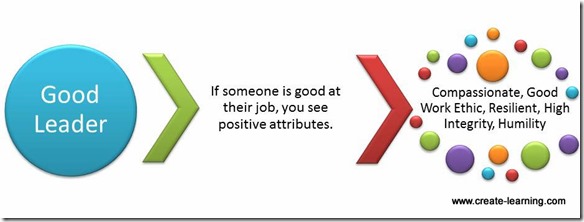All behavior traits we attribute to leaders are the same actions of a decent person; this is why defining in-group behavior characteristics are hyperbolic or a dangerous way for incompetent managers to reinforce their misattribution of success.
Googling ‘what personality traits make a good leader’ will yield a plethora of results.
Here are 10 Traits of Great Leaders (and Their Followers) from Inc.Com
- Ambition
- Patience
- Humility
- Humor
- Vision
- Compliance
- Tolerance
- Courage
- Accountability
- Gratitude
Shit, it is like we are playing an on-line dating game and the person desires “funny, smart, and has a good job.”

The challenge I have with this list above is the problem I have with other lists. Much of the above list applies to anyone who works. It is devoid of any context.
The list creates a focus on quick fix solutions with the ability for a consultant to walk in & offer some magical recipe that, they claim, “will fix all that ‘ails ya”
It is not that simple, what makes effective leaders may is as broad as there are people. Plus leadership only exists in the context that it is being used.
Are we talking about:
- Managerial-Leadership
- Familial-Leadership
- Sports-Leadership
- Quality-Leadership
- Etc…
Instead of looking for stuff that falls within the box. We are should look for extreme behaviors that may be deleterious to success.
For example “Courage” using an Aristotelian mean, can be useful in the center of the continuum. If someone is extreme on the ‘Courage’ end, so much that they are foolhardy, and not cautious or afraid of anything – that is bad. OR on the other end, they have no Courage at all that also is bad.
What may be an alternative to these ‘Great Leader’ lists is to look at the context of the work. Frame what is required to complete the work:
- Complexity-of-Information processing (CIP)
- Levels of work to support the efforts
- Work with a person to lead a ‘probe – reflect – learn – change – probe’ series of safe to fail experiments
- Determine what works to amplify plus what does not work to muffle

That all is much harder than measuring yourself against an external benchmark, that has little to do with your work.
The results come from understanding the work and what is needed, in the context of the workplace.
Simply using an external assessment or benchmark neuters any progress plus emergent innovation that people doing the work create.

